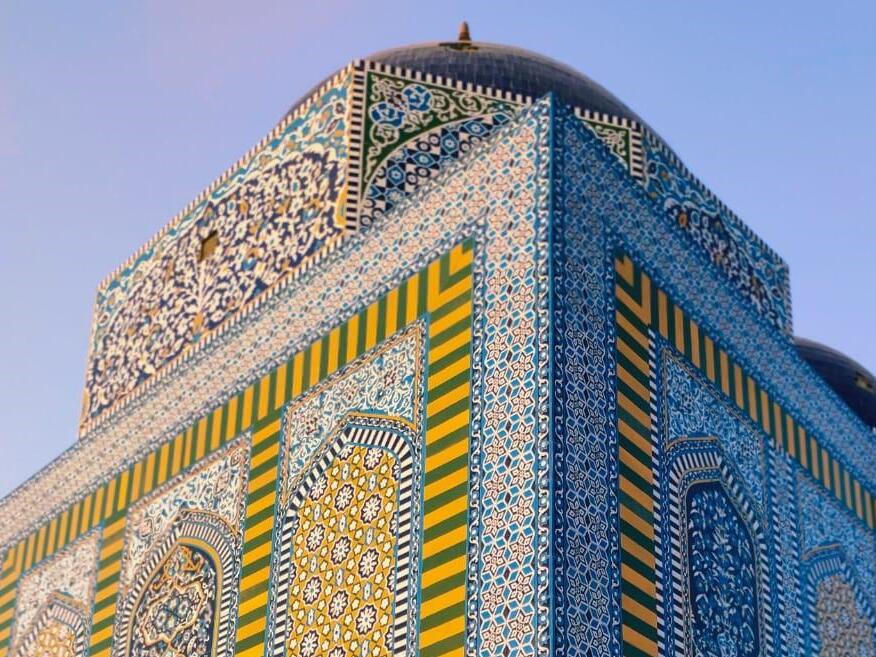Physical Address
304 North Cardinal St.
Dorchester Center, MA 02124
Physical Address
304 North Cardinal St.
Dorchester Center, MA 02124

The small city of Nasarpur in Pakistan has been renowned for its ceramics for centuries. When ceramic worker Ghulam Hyder Daudpota decided to travel to London to hone his craft, he thought it might be futile. However, it turned into a life-changing opportunity.
Growing up with eight siblings in a city where mosques and shrines are adorned with terracotta and blue glazed tiles, known as the art of kashikari, Daudpota spoke little English until the age of 27. His parents couldn’t afford to pay his tuition fees.
Yet, the talented Pakistani was awarded a full scholarship at the King’s Foundation school of traditional arts (KFSTA) in east London. After completing his education, he returned to Pakistan to help revive the declining craft.
“Kashikari is commonplace across Sindh, but when I was growing up, it was considered a dying art, practiced by only a few craftsmen. Without my time at KFSTA, I wouldn’t be where I am today,” says Daudpota, speaking from his workshop in Nasarpur, which now employs 40 people.
Originating from the Iranian city of Kashan, kashikari involves creating biomorphic patterns on terracotta clay by dabbing graphite on perforated paper and applying turquoise metallic pigments found in copper and cobalt oxides.
“A century ago, we had a variety of glazes and techniques, masterpieces like those in Shah Jahan mosque in Thatta, but we lost our skills and knowledge without proper patronage,” Daudpota explains.
Daudpota has since worked on designs for Islamabad airport, Pakistan’s pavilion at Dubai Expo 2020, and restorations at notable mosques and mausoleums. In 2010, he was awarded the Jerwood prize for traditional arts for a tile fountain inspired by kashikari panels found in Nasarpur’s old mosque. He sold the fountain for £5,000 and received £2,500 in prize money, which he used to open his workshop in Pakistan.
His journey to this point was anything but straightforward. Not performing well in school, his parents apprenticed him to a local craftsman. A pivotal moment came when he worked on a commission at a private mansion owned by a teacher at the National College of Arts (NCA) in Lahore.
The teacher told Daudpota that his experience could qualify him for a master’s degree if he learned English within four months. He took sunrise classes every day and passed the test.
The NCA has an arrangement with KFSTA, sending one student to London each year for almost three months. Daudpota was selected for the 2008 program, staying to complete his two-year degree.
When asked how he would pay for tuition, Daudpota replied, “God has helped me in the past and will help me in the future.” His response earned him a scholarship.
Farkhondeh Ahmadzadeh, a former student who is presenting a Persian miniature series at the Aga Khan Centre in King’s Cross, London, recalls Daudpota working night shifts at the O2 arena’s car park to send money back to his mother. “He slept on the bus to school but was always the first to arrive and the last to leave,” she says.
KFSTA promotes “the living traditions of the world’s sacred and traditional art forms,” including Persian miniature painting, Moroccan zellige mosaic tilework, and Egyptian Mamluk woodcarving.
Established in 1993 as the Prince of Wales’s Institute of Architecture, later becoming the Prince’s Foundation, the school runs international programs on traditional techniques of painting, stained glass, ceramics, carving, and traditional Islamic geometry.
Its 2024 degree show is currently being held at the Garrison Chapel in London until August 4th, showcasing projects of 10 master’s students.
Among the works on display is an Indian stained glass installation by Roopini Venkatasubramanian, a former quantum physics student from Tamil Nadu who received a scholarship. Inspired by the tradition of drawing geometrical patterns using rice flour, called kolam, Venkatasubramanian appreciates how the school has deepened her understanding of her cultural heritage.
Daudpota echoes similar sentiments, stating, “Teachers in my country discouraged me from pursuing traditional arts, calling it primitive. The school broadened my perspective and offered a platform to transform a dying tradition into a living one.”
Source: The Guardian



